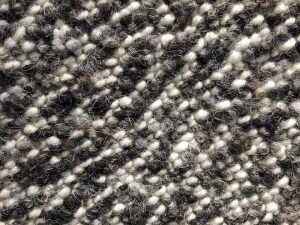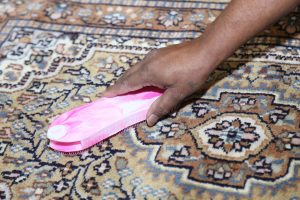The Rudiments of Carpet Cleaning FibersThe Rudiments of Carpet Cleaning Fibers
Carpets can be made of a variety of different types of fibers and each one will have its own set of qualities.
This makes cleaning different types of carpets a different subject depending on which type of fibers they are using. So, a rudimentary guide to carpet cleaning should include a look at the different types of carpet fibers.
Carpet will contain any of the following materials which you see presented here in order of popularity on the markets today; polyester, nylon, olefin and wool. We see most nylon carpets in our line of work but many carpets will include a blend.
There are two important benefits to knowing the type of fibers in your carpet.
The first is that you will now how cleanable your carpet is and the second is that you will have a better idea of what types of cleaning agents will work best with your type of carpet.
Light It Up
While playing with fire is never a good idea around your carpets, or anywhere, they best way to determine the fabrics of your carpets is to remove a small piece and light it up.

Choose a place where the missing fibers will not be too noticeable and pull your fiber from there. Hold a single strand without pulling it too hard and then snip it with a small pair of scissors. Once you have the fiber in hand you can then move to a safe location and prepare to set it ablaze.
Hold the piece of fiber with your tweezers and use an ordinary butane lighter to set it on fire. You will want to observe the odor, action and appearance of the strand as it burns.
If the strand aches away from the heat of the flame, you know it is synthetic fiber, but if it doesn’t move, it is probably a natural fiber. You can wait for it to cool off after the fire is extinguished and you will see that a synthetic fiber will leave a tar like residue while a natural fiber will leave no residue at all, just ash.
Fiber Predictions
Each of the different fabrics will have some important qualities to look for when they are burning. Once again you will want to observe the burning of the fiber very closely.
Nylon

If the fiber burns with a blue base and an orange flame with no smoke until the fire has gone out is a carpet fiber made of nylon. After the flame has sputtered out, you will notice a unique smell like celery or wax as it burns and leaves behind a small brown or grey bead.
Nylon can be cleaned very easily and is pretty resistant to staining as well, but it can be damaged by certain carpet cleaners. It is more susceptible to staining than the other synthetic fiber so it would be a good idea to use a fabric protector if possible.
Polyester

If the flame is all orange and produces a black smoke and a drippy residue, you are burning a polyester fiber. This fiber will release a kind of sweet odor and will leave a hard shiny bead.
Olefin

Like the nylon fiber, an olefin fiber will burn blue at the base with an orange flame and not release smoke. So the way the flame acts and the smell is an important distinguishing factor between the two. Unlike the sputtering nylon strand, olefin will burn clean and even. The smell will be like tar or asphalt and leave behind a hard round bead that can be brown or tan.
Olefin is a good option because it is so stain resistant. It is also hydrophobic and provides a wicking action that can reveal darker colors when the carpet dries.
Wool

If the flame is orange and sputters with only a small amount of smoke or none at all, this is a wool fiber. As you may imagine, this will smell like burnt hair when it is burnt and will leave a soft black ash when extinguished.
Wool will not react well if treated with harsh chemicals and will dissolve completely in chlorine bleach. It can be difficult to treat wool and remove stains but it can be easy to clean.
While there is a lot of information to keep track of nowadays, knowing a little more about your carpets fibers will lead to a longer lasting beautiful carpet. This information will allow you to choose the best cleaning agents and approaches to keeping your carpet clean and this means a cleaner brighter atmosphere as well

